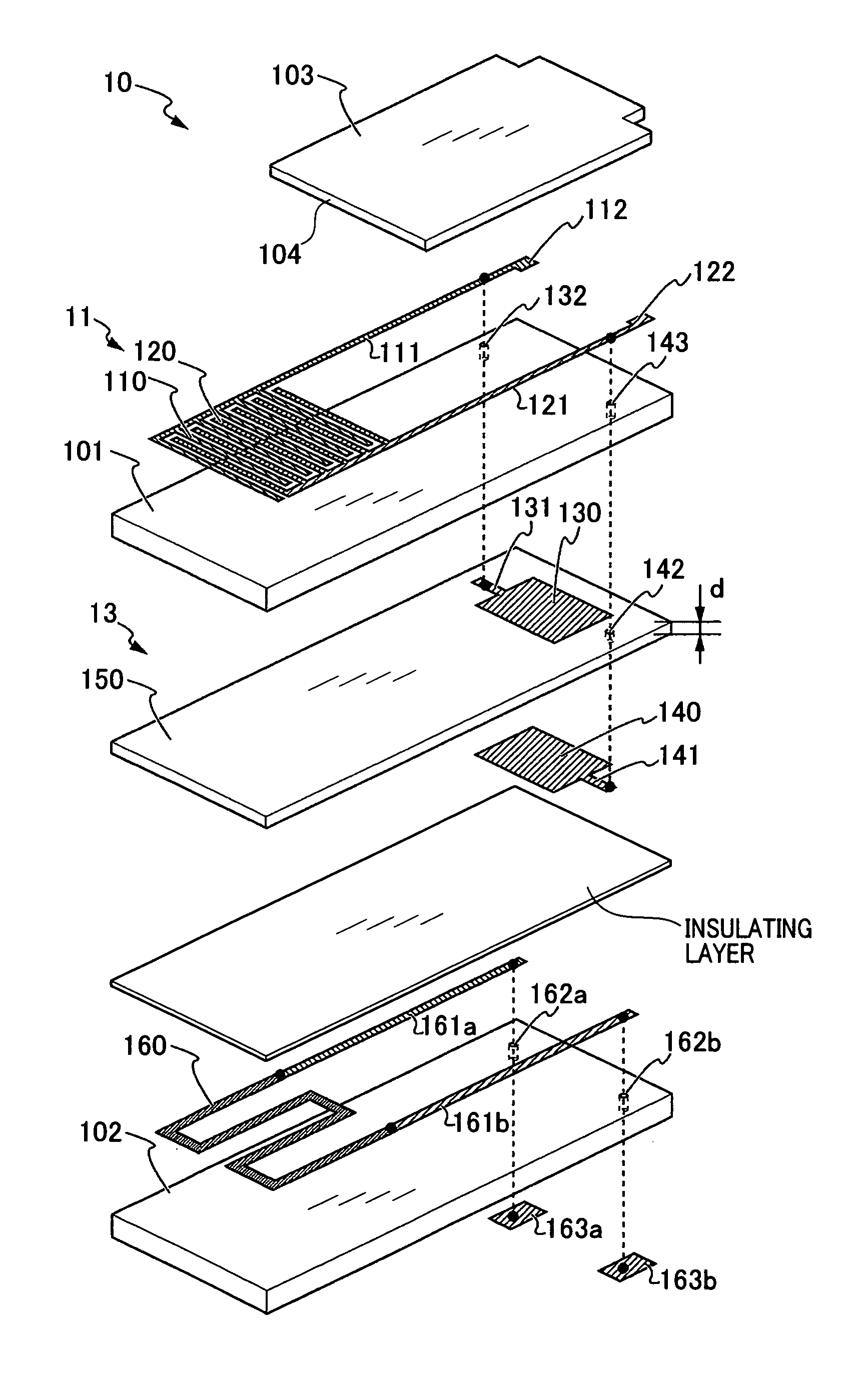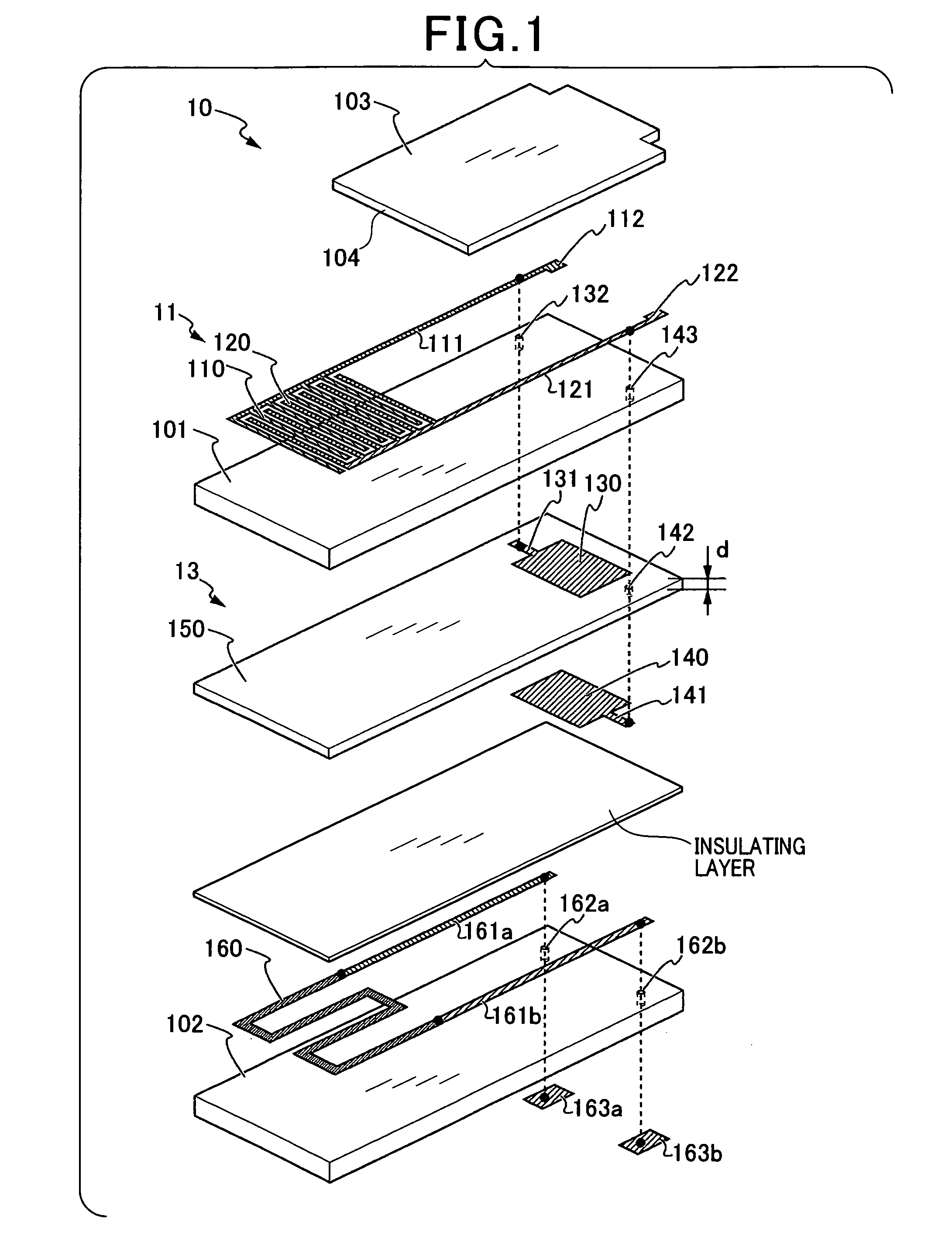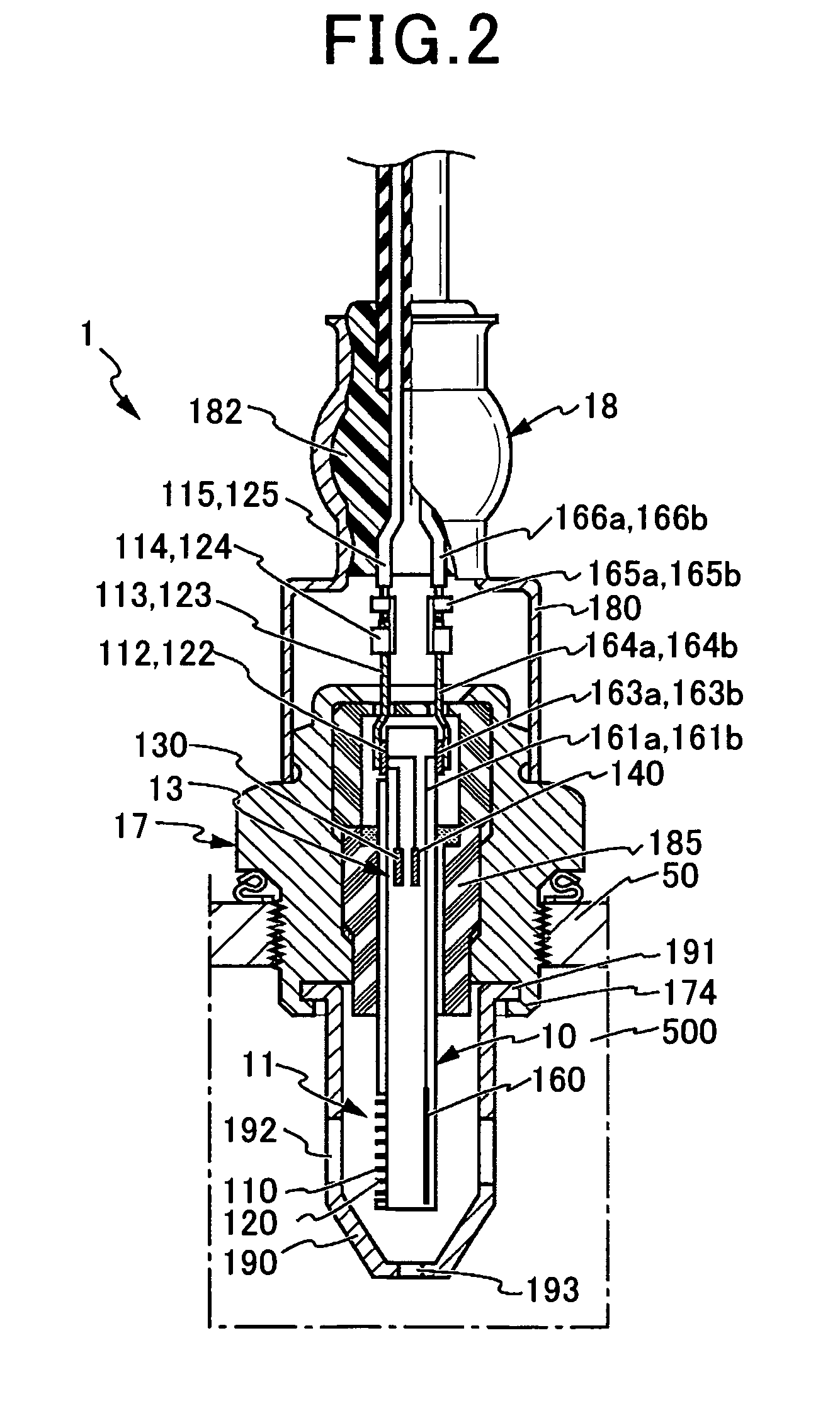Method and device for detecting particulate matter contained in a gas to be measured
a technology of particulate matter and gas, which is applied in the direction of variable capacitors, instruments, machines/engines, etc., can solve the problems of detecting damage and deterioration of electrodes, clogging of dpf, and increasing pressure loss, so as to achieve accurate measurement, increase the direct current resistance between parallel plate conductors, and detect stably
- Summary
- Abstract
- Description
- Claims
- Application Information
AI Technical Summary
Benefits of technology
Problems solved by technology
Method used
Image
Examples
first embodiment
[0051]A first embodiment will be described with reference to FIG. 1 to FIGS. 9A and 9B, and FIG. 13.
[0052]A particulate matter detecting device 100 according to the first embodiment of the present embodiment is provided on an exhaust gas flow path of an internal combustion engine. The exhaust gas serves as the gas to be measured. The particulate matter detecting device 100 detects the amount of particulate matter within the gas to be measured. Combustion control of the internal combustion engine, regeneration of an exhaust emission control device, abnormality diagnosis, and the like are performed using the detection result.
[0053]The particulate matter detecting device 100 includes at least a particulate matter detection element 10 and a detection circuit 20. The particulate matter detection element 10 is provided with a pair of detection electrodes 110 and 120 serving as a detection section 11. The pair of detection electrodes 110 and 120 are provided such as to oppose each other wi...
second embodiment
[0128]A particulate matter detection element 10a according to a second embodiment of the present embodiment will be described with reference to FIG. 10. In the second embodiment and subsequent embodiments, configurations similar to those according to the first embodiment are given the same reference numbers. Explanations thereof are omitted.
[0129]According to the first embodiment, an example is described in which the dielectric layer 150 is formed in a rough plate shape by the doctor blade method or the like. The dielectric layer 150 is layered on the rear-surface side of the insulating substrate 101 configuring the detection section 11. As an alternative, as described according to the second embodiment, a capacitance element may be formed on the front-surface side of the insulating substrate 101 on which the detection electrodes 110 and 120 are provided. Specifically, a first plate conductor 130a and a first conductor lead section 121a may be formed on the front surface of the insu...
third embodiment
[0132]A particulate matter detection element 10b according to a third embodiment of the present embodiment will be described with reference to FIG. 11 and FIG. 12.
[0133]According to the first and second embodiments, a configuration is described in which the detection section 11 is a plurality of detection electrodes 110 and 120 opposing each other such as to be arrayed in a comb-shape. As an alternative, as described according to the third embodiment, detection electrodes 110b and 120b that extend linearly may be disposed opposing each other as opposing electrodes. The detection electrodes 110b and 120b may be covered by an insulating protective layer 103b provided with an opening section 104 such that the detection section 11b is exposed.
[0134]According to the third embodiment as well, in a state in which the particulate matter is accumulated between the detection electrodes 110b and 120b, a capacitance component 13b is connected in parallel to the detected resistance RSEN. In a st...
PUM
| Property | Measurement | Unit |
|---|---|---|
| temperature | aaaaa | aaaaa |
| direct current resistance | aaaaa | aaaaa |
| alternating current impedance | aaaaa | aaaaa |
Abstract
Description
Claims
Application Information
 Login to View More
Login to View More - R&D
- Intellectual Property
- Life Sciences
- Materials
- Tech Scout
- Unparalleled Data Quality
- Higher Quality Content
- 60% Fewer Hallucinations
Browse by: Latest US Patents, China's latest patents, Technical Efficacy Thesaurus, Application Domain, Technology Topic, Popular Technical Reports.
© 2025 PatSnap. All rights reserved.Legal|Privacy policy|Modern Slavery Act Transparency Statement|Sitemap|About US| Contact US: help@patsnap.com



